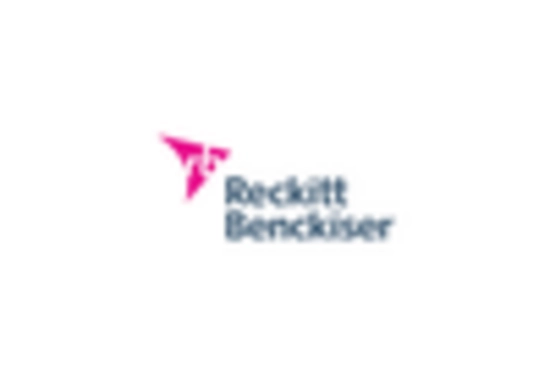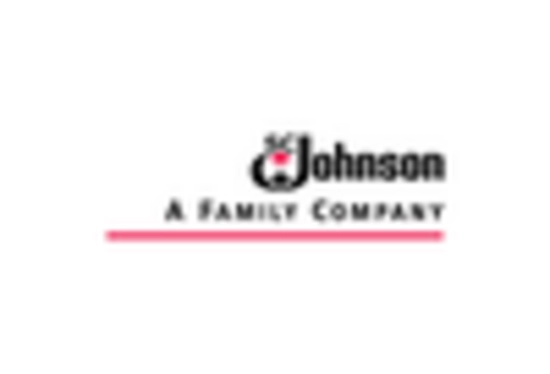The Household Cleaner Market is currently characterized by a dynamic competitive landscape, driven by increasing consumer demand for effective and environmentally friendly cleaning solutions. Major players such as Procter & Gamble (US), Unilever (GB), and Reckitt Benckiser (GB) are at the forefront, leveraging innovation and sustainability as key pillars of their operational strategies. Procter & Gamble (US) focuses on enhancing its product portfolio with eco-friendly formulations, while Unilever (GB) emphasizes its commitment to reducing plastic waste through innovative packaging solutions. Reckitt Benckiser (GB) is also investing heavily in research and development to create products that meet evolving consumer preferences, thereby shaping a competitive environment that prioritizes sustainability and innovation.
The market structure appears moderately fragmented, with a mix of established brands and emerging players. Key tactics employed by these companies include localizing manufacturing to reduce costs and optimize supply chains, which enhances their responsiveness to market demands. This localized approach not only improves efficiency but also allows companies to tailor products to regional preferences, thereby strengthening their market positions. The collective influence of these key players fosters a competitive atmosphere where agility and adaptability are paramount.
In August 2025, Unilever (GB) announced a partnership with a leading technology firm to develop AI-driven cleaning solutions aimed at enhancing user experience and product effectiveness. This strategic move underscores Unilever's commitment to integrating advanced technology into its product offerings, potentially setting a new standard in the household cleaning sector. The collaboration is likely to enhance product personalization, thereby attracting a tech-savvy consumer base.
In September 2025, Reckitt Benckiser (GB) launched a new line of biodegradable cleaning products, reinforcing its sustainability agenda. This initiative not only aligns with global environmental goals but also positions the company as a leader in eco-conscious cleaning solutions. The introduction of these products may appeal to environmentally aware consumers, thereby expanding Reckitt's market share in a competitive landscape increasingly focused on sustainability.
In October 2025, Procter & Gamble (US) unveiled a new digital platform designed to streamline consumer engagement and feedback on its cleaning products. This platform aims to foster a direct connection with consumers, allowing for real-time insights into product performance and preferences. Such a move indicates a shift towards a more consumer-centric approach, which could enhance brand loyalty and drive future innovations.
As of October 2025, the Household Cleaner Market is witnessing a pronounced trend towards digitalization, sustainability, and the integration of artificial intelligence. Strategic alliances are increasingly shaping the competitive landscape, enabling companies to pool resources and expertise to innovate more effectively. Looking ahead, competitive differentiation is likely to evolve from traditional price-based competition to a focus on innovation, technological advancements, and supply chain reliability, as companies strive to meet the growing expectations of environmentally conscious consumers.


















Leave a Comment